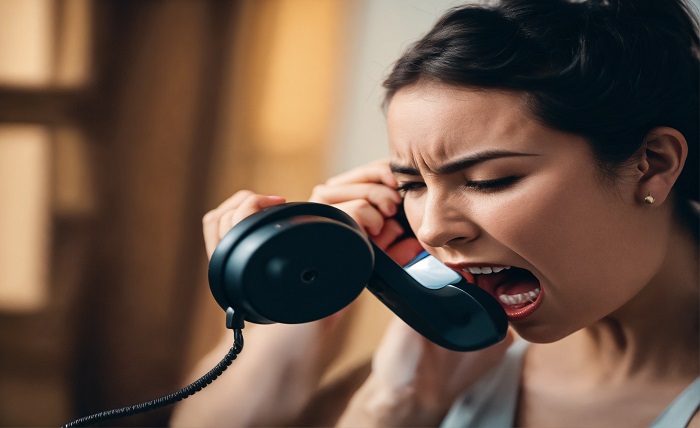Excessive anxiety can make a person feel uneasy and uncomfortable in many everyday situations. But is it possible to break free from intrusive thoughts? And how can one address social phobia? Let’s explore the causes, symptoms, and effective methods for managing heightened tension.
What Is Anxiety?
Anxiety is a persistent state of unease, fear, nervousness, or self-doubt (often without a specific cause) acting as a constant backdrop to your life. It’s like living with an ever-present feeling that “something bad is about to happen,” even when nothing threatening is actually occurring.
Living in such a state for a long time causes emotional discomfort and creates serious challenges in daily life. Even simple tasks, such as grocery shopping, can start to feel like major ordeals, bringing unnecessary stress and exhaustion. An anxious person may prefer playing at an online casino or watching a movie at home to going out and facing their fears.
Types of Anxiety
Anxiety disorders come in many forms. The most common include:
- Generalized Anxiety Disorder (GAD)
- Panic Disorder
- Social Anxiety Disorder (Social Phobia)
- Specific Phobias (including agoraphobia)
- Post-Traumatic Stress Disorder (PTSD)
- Obsessive-Compulsive Disorder (OCD)
Social Anxiety Disorder (SAD) stands out for its intense and specific fear of social situations, driven by a constant worry about negative judgment from others.
A person experiencing social phobia often limits interactions with others, which can negatively affect daily activities as well as long-term goals. Fear and avoidance may hinder academic achievements, career growth, and personal relationships. In severe cases, it can lead to near-total social isolation.
Milder social anxiety is more about discomfort and inner tension rather than complete avoidance. However, without timely support, even a mild form can escalate into something more serious, requiring professional intervention.
Symptoms of Social Anxiety
People with social phobia often avoid situations where:
- They might be the focus of attention (e.g., speaking in a group)
- They are expected to maintain a conversation
- They want to initiate romantic contact
- They must interact with high-status individuals
- They need to assert themselves or say “no”
- They might receive criticism or feedback
- Others could notice visible signs of anxiety (blushing, shaking hands, trembling voice)
Not all nervousness is social anxiety. Many people feel anxious before public speaking or meeting strangers, which is situational anxiety that fades once the event is over. With social phobia, the anxiety begins long before the event, intensifies during it, and may cause physical symptoms such as shaking, sweating, or even nausea.
Causes of Anxiety
Anxiety can develop due to a combination of factors:
- Genetic predisposition
- Negative past experiences
- Cultural or environmental influences
- High-impact stressful events
It can affect people of any age or social background.
A hallmark of social anxiety is avoidance behavior. While avoiding triggering situations offers short-term relief, it reinforces the fear over time, making it harder to confront and overcome.
Stages of Anxiety Development
Shyness
A common personality trait that appears in certain situations. You may feel awkward or vulnerable but still manage to cope emotionally and continue the interaction. Shyness often fades naturally over time.
Social Anxiety
At this stage, situations involving potential judgment provoke stronger fear and discomfort. Physical symptoms like sweating, shaking, or a rapid heartbeat may occur.
Social Anxiety Disorder
When symptoms become so severe that they interfere with daily life, such as avoiding lunch breaks to hide from colleagues or quitting a job due to fear of criticism, it may indicate SAD. In extreme cases,
individuals might turn to alcohol or other substances to manage their distress or avoid social contact entirely.
How to Manage Anxiety on Your Own
Overcoming social phobia is essential for improving life quality. It affects personal, social, and professional relationships, and can hinder forming friendships, building a career, or finding a romantic partner.
If your anxiety is mild, such as shyness or occasional unease, try confronting the situations you fear instead of avoiding them. For example:
- Visit a café alone
- Strike up a conversation with a stranger
- Attend a dance class or hobby group
At first, it will be uncomfortable. But with small, consistent steps, it becomes easier over time. Before social events, try:
- Simple breathing exercises
- Taking small sips of water
- Practicing speeches or conversations in front of a mirror
You could also join group training programs, either online or offline, which help reduce anxiety in social interactions, teach communication skills, and build confidence.
When to See a Doctor
If fears, panic attacks, or distress severely affect your daily life, seek help from a psychotherapist or psychiatrist. Social anxiety, like other anxiety disorders, is highly treatable.
Through therapy, you can learn:
- New ways of thinking and self-perception
- Communication and stress management skills
- Gradual exposure techniques to reduce fear
Bottom Line
While social anxiety can be deeply challenging, it is far from hopeless. With the right professional guidance, supportive relationships, and personal effort, you can significantly reduce its impact. Every small step toward facing your fears increases your ability to become a stronger, more open, and happier person.
